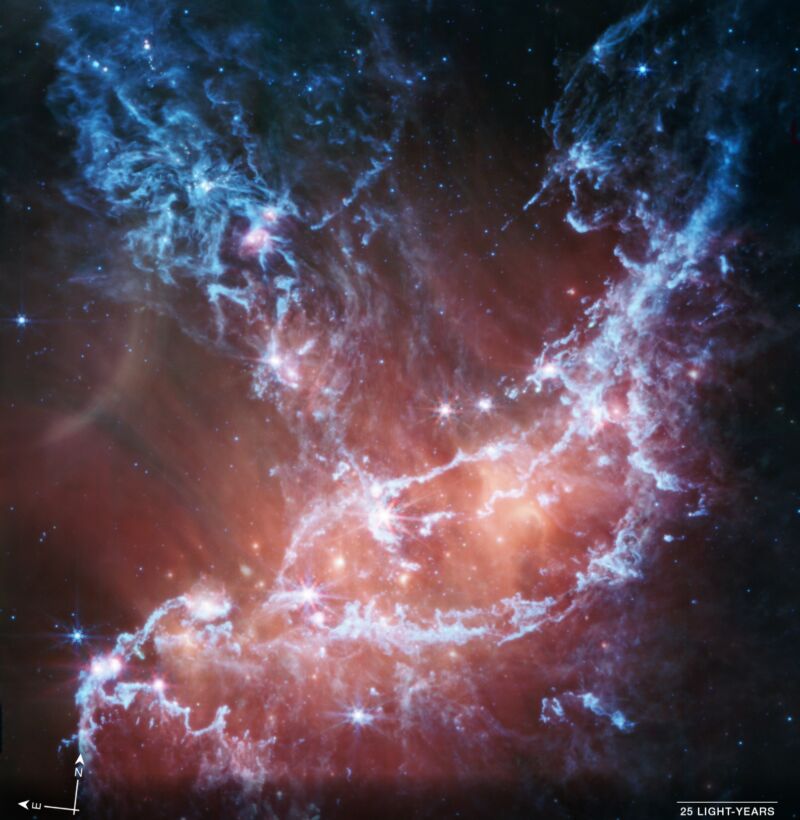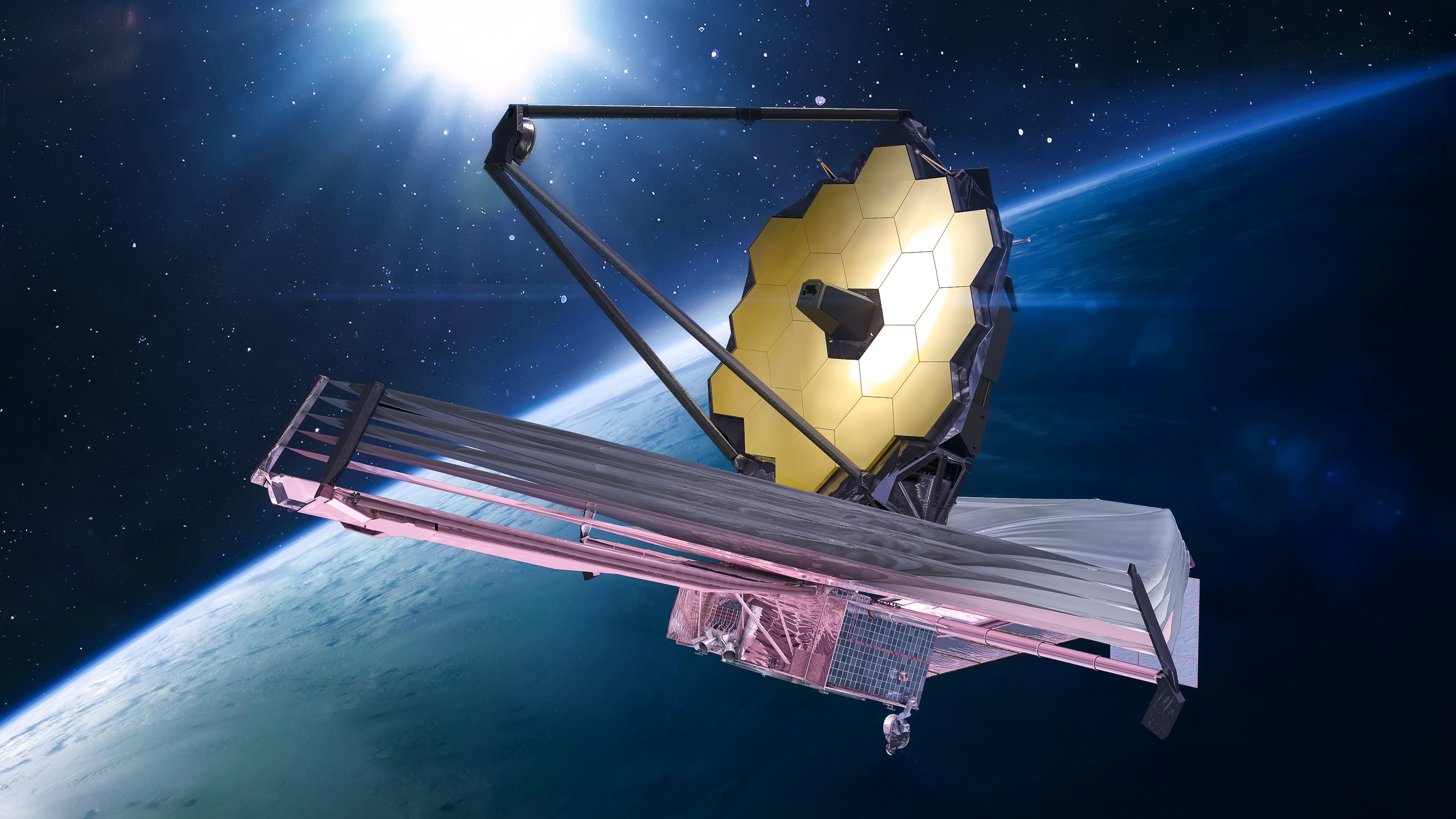
Good morning. It is October 23, and today's image features a new view of a star cluster within the Small Magellanic Cloud, one of the nearest galaxies to Earth. This galaxy has an estimated 3 billion stars, which sounds like a lot. However it is tiny compared to the nearest galaxy that is of a similar size to our own Milky Way. That would be the Andromeda Galaxy, which has an estimated 1 trillion stars. That's ... a lot.
Anyway, one of the neatest features in the Small Magellanic Cloud is a particularly bright cluster of stars known as NGC 346, discovered about 200 years ago by a Scottish astronomer. Some of these stars may be as young as 2 million years old.
In today's image, we get an infrared view of NGC 346 from NASA’s James Webb Space Telescope. In this image, blue represents silicates and sooty chemical molecules known as polycyclic aromatic hydrocarbons. According to NASA, an arc at the center left may be a reflection of light from the star near the arc’s center. The bright patches and filaments mark areas with abundant numbers of protostars. Astronomers looked for the reddest stars and found 1,001 pinpoint sources of light, most of them young stars still embedded in their dusty cocoons.
Source: NASA's James Webb Space Telescope.



3175x175(CURRENT).thumb.jpg.b05acc060982b36f5891ba728e6d953c.jpg)
Recommended Comments
There are no comments to display.
Join the conversation
You can post now and register later. If you have an account, sign in now to post with your account.
Note: Your post will require moderator approval before it will be visible.